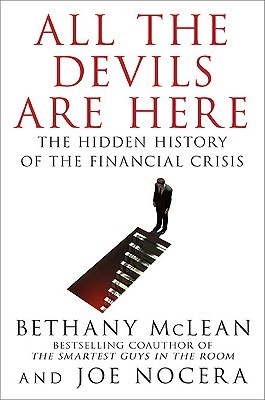
1
The seeds of financial disaster were sown more than thirty years ago when
three smart, ambitious men, working sometimes in concert—allies in a cause
they all believed in—and sometimes in opposition—competitors trying to
gain advantage over each other—created a shiny new financial vehicle called
the mortgage-backed security. In the simplest of terms, it allowed Wall Street
to scoop up loans made to people who were buying homes, bundle them
together by the thousands, and then resell the bundle, in bits and pieces, to
investors. Lewis Ranieri, the messianic bond trader who ran the Salomon
Brothers mortgage desk and whose role in the creation of this new product
would be immortalized in the best-selling book Liar’s Poker, was one. Larry
Fink, his archrival at First Boston, who would later go on to found
BlackRock, one of the world’s largest asset management firms, and who
served as a key adviser to the government during the financial crisis, was
another. David Maxwell, the chief executive of the Federal National
Mortgage Association, a quasi-governmental corporation known as Fannie
Mae, was the third. With varying degrees of fervor they all thought they were
doing something not just innovative but important. When they testified before
Congress—as they did often in those days—they stressed not (heaven forbid!)
the money their firms were going to reap from mortgage-backed securities,
but rather all the ways these newfangled bonds were making the American
Dream of owning one’s own home possible. Ranieri, in particular, used to
wax rhapsodically about the benefits of mortgage-backed securities for
homeowners, claiming, correctly, that the investor demand for the mortgage
bonds that he and the others were creating was increasing the level of
homeownership in the country.
These men were no saints, and they all knew there were fortunes at stake.
But the idea that mortgage-backed securities would also lead inexorably to the
rise of the subprime industry, that they would create hidden, systemic risks
the likes of which the financial world had never before seen, that they would
undo the connection between borrowers and lenders in ways that were truly
dangerous—that wasn’t even in their frame of reference. Or, as Ranieri told
Fortune magazine after it was all over: “I wasn’t out to invent the biggest
floating craps game of all time, but that’s what happened.”
It was the late 1970s. The baby boom generation was growing up. Boomers
were going to want their own homes, just like their parents. But given their
vast numbers—there were 76 million births between 1949 and 1964—many
economists worried that there wouldn’t be enough capital to fund all their
mortgages. This worry was exacerbated by the fact that the main provider of
mortgages, the savings and loan, or thrift, industry, was in terrible straits. The
thrifts financed their loans by offering depositors savings accounts, which
paid an interest rate set by law at 5¾ percent. Yet because the late 1970s was
also a time of high inflation and double-digit interest rates, customers were
moving their money out of S&Ls and into new vehicles like money market
funds, which paid much higher interest. “The thrifts were becoming
destabilized,” Ranieri would later recall. “The funding mechanism was
broken.”
Besides, the mortgage market was highly inefficient. In certain areas of the
country, at certain times, there might be a shortage of funds. In other places
and other times, there might be a surplus. There was no mechanism for
tapping into a broader pool of funds. As Dick Pratt, the former chairman of
the Federal Home Loan Bank Board, once told Congress, “It’s the largest
capital market in the world, virtually, and it is one which was sheltered from
the normal processes of the capital markets.” In theory at least, putting capital
to its most efficient use was what Wall Street did.
The story as it would later be told is that Ranieri and Fink succeeded by
inventing the process of securitization—a process that would become so
commonplace on Wall Street that in time it would be used to bundle not just
mortgages but auto loans, credit card loans, commercial loans, you name it.
Ranieri named the process “securitization” because, as he described it at the
time, it was a “technology that in essence enables us to convert a mortgage
into a bond”—that is, a security. Fink developed a key technique called
tranching, which allowed the securitizer to carve up a mortgage bond into
pieces (tranches), according to the different risks it entailed, so that it could be
sold to investors who had an appetite for those particular risks. The cash
flows from the mortgages were meted out accordingly.
The truth is, though, that the creation of mortgage-backed securities was
never something Wall Street did entirely on its own. As clever and driven as
Fink and Ranieri were, they would never have succeeded if the government
hadn’t paved the way, changing laws, for instance, that stood in the way of
this new market. More important, they couldn’t have done it without the
involvement of Fannie Mae and its sibling, Freddie Mac, the Federal Home
Loan Mortgage Corporation. The complicated interplay that evolved between
All the Devils are Here: The Hidden History of the Financial Crisis - Bethany Mclean and Joe Nocera




